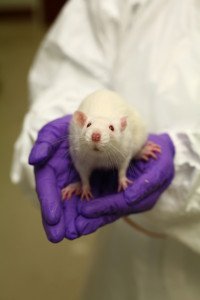A new law change in New Zealand recognises animals as having emotions and requires scientists to consider non-animal techniques before using animals in research.

The Animal Welfare Amendment Bill passed its final reading in parliament this week (full bill available here).
The Bill amends the Animal Welfare Act (1999) in a number of ways, including to “recognise that animals are sentient.”
The law change also requires that animal ethics committees explicitly consider the use of non-sentient or non-living alternatives, such as cell-based tests and tissue modelling, when approving research projects.
It explicitly bans the use of animals for the testing of cosmetics.
The SMC collected the following expert commentary. Feel free to use these quotes in your reporting. If you would like to contact a New Zealand expert, please contact the SMC (04 499 5476; smc@sciencemediacentre.co.nz).
Dr Virginia Williams, Animal Welfare Consultant and Chair of the National Animal Ethics Advisory Committee (NAEAC), responded to our questions:
What does animal sentience really mean?
“To say that animals are sentient is to state explicitly that they can experience both positive and negative emotions, including pain and distress. The explicitness is what is new and marks another step along the animal welfare journey. An acknowledgement within the legislation that animals are indeed sentient provides a stronger underpinning of the requirements of the Act.
What do the changes mean for scientists?
“A requirement to consider the suitability of alternatives when considering project applications has been added. NAEAC is happy to see this in explicit form in the Act although it is our understanding that this was already common practice in most if not all animal ethics committees.
“NAEAC’s Guideline on application templates used by AECs includes the application of the “Three Rs”, which include replacement alongside reduction and refinement, with replacement defined as the replacement wherever possible by non-sentient or less sentient alternatives.
“Regarding the ban on the testing of cosmetics, once again, NAEAC is happy to see this in explicit form, although an application of the cost/benefit analysis which underpins the ethical use of animals in research, testing and teaching should have been enough to prevent this use of animals anyway.”
Comment on other changes
“Formerly, animal ethics committee (AEC) approval was not necessary if researchers were going to kill animals for tissue use. It was NAEAC’s opinion that, because these animals are to be used for research purposes, they should be included in the ethical review process and their numbers, formerly not required to be recorded, should be included in the animal use statistics, albeit as a separate category. Some AECs already required ethical oversight of such animals, while not recording the numbers.
“The other main change relates to the breeding of animals whose welfare may be deliberately compromised for research purposes. Because such breeding occurs outside the definition of ‘animal’, ie prior to midway through gestation or incubation, no ethical oversight has been required.
“NAEAC recommended that ethical oversight be established in such cases and is pleased to see this incorporated into the legislation. We are unaware that any AEC was already overseeing such breeding.”